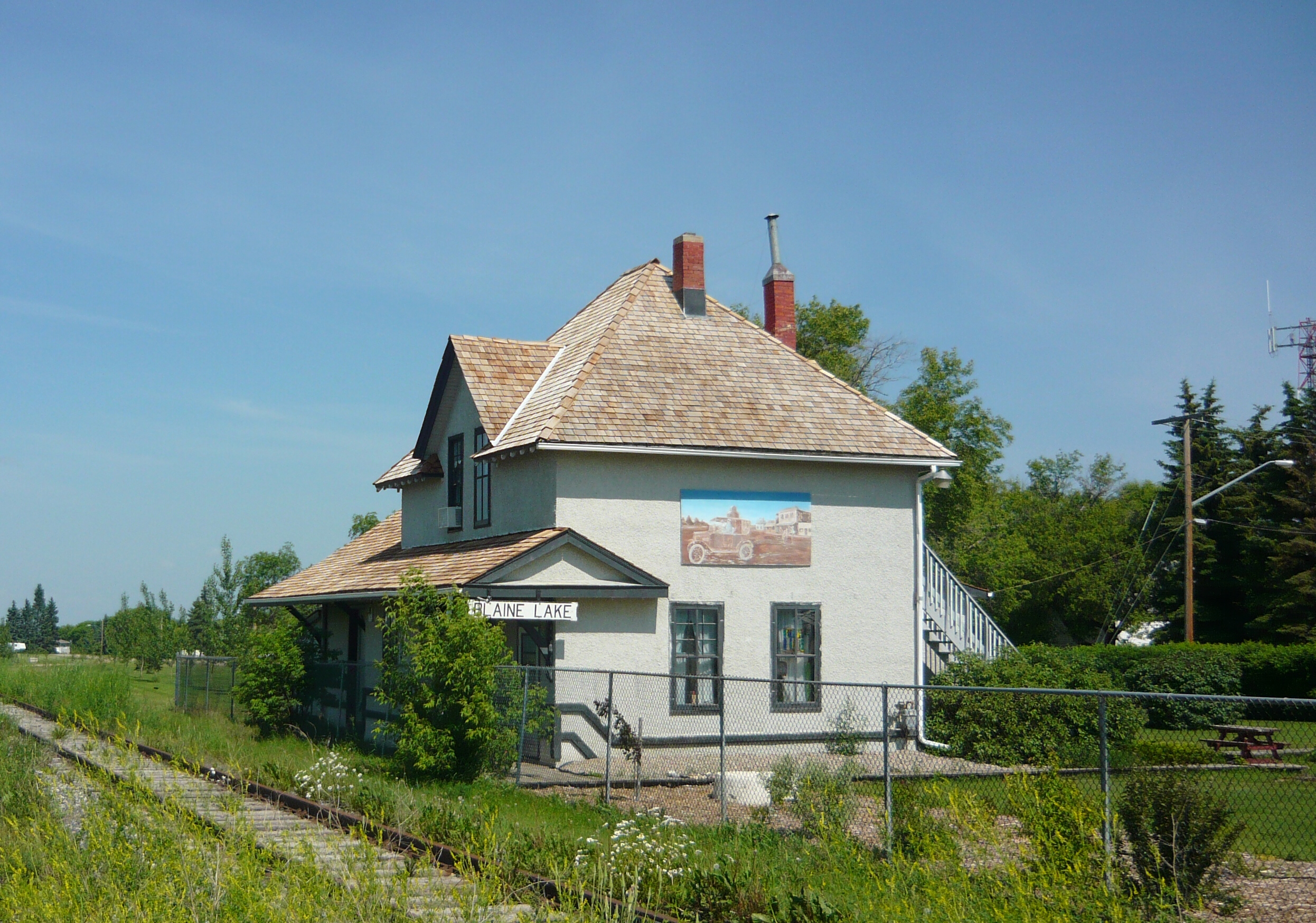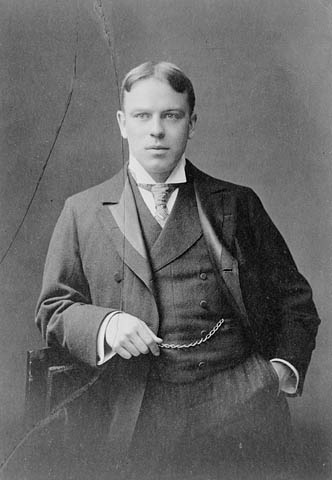|
Emma Woikin
Emma Woikin (; December 30, 1920 – May 22, 1974) was a Canadian civil servant who, in 1946, was convicted of spying on behalf of the Soviet Union. Woikin was one of the Canadians identified as spies by Igor Gouzenko when he defected from the Soviet Embassy in Ottawa in September 1945 in what became known as the Gouzenko Affair. Woikin was sentenced to two-and-a-half years at Kingston Penitentiary, becoming the first woman imprisoned for espionage in Canada. Early life Woikin was born Emma Konkin on December 30, 1920 in Blaine Lake, Saskatchewan to Alex and Pearl Konkin, the youngest of five children. Her parents were Doukhobors who had fled Russia in 1899 and her family spoke Russian in the home. Her mother died when Woikin was 15 following a series of strokes. Woikin excelled in school and, at the age of 12, she completed grade eight, the highest level of schooling offered by the local schoolhouse. However, the high school in Blaine Lake would not accept her as a student, a ... [...More Info...] [...Related Items...] OR: [Wikipedia] [Google] [Baidu] |
Blaine Lake
Blaine Lake is a town in central Saskatchewan, Canada. It is located 85 km north of Saskatoon, 104 km southwest of Prince Albert and 104 km east of North Battleford at the junction of Highway 12 and Highway 40. Nearby are the urban centres of Shellbrook and Rosthern. Blaine Lake is considered the "Gateway to the Northern Lakes" due to its proximity to fishing, hunting and camping sites, as well as its convenient location at a junction of two highways. History A surveyor named Blaine was drowned in the lake prior to the establishment in 1911. The historic CN train station that now houses thBlaine Lake Wapiti Libraryalong with the local town history museum. The station was built in 1912 two years after the rail line between Prince Albert and North Battleford was constructed and served the community until 1973. The Doukhobor Dugout House is a Provincial Heritage Property southeast of the town. ;Heritage properties A number of heritage buildings are located with ... [...More Info...] [...Related Items...] OR: [Wikipedia] [Google] [Baidu] |
Shorthand
Shorthand is an abbreviated symbolic writing method that increases speed and brevity of writing as compared to longhand, a more common method of writing a language. The process of writing in shorthand is called stenography, from the Greek ''stenos'' (narrow) and ''graphein'' (to write). It has also been called brachygraphy, from Greek ''brachys'' (short), and tachygraphy, from Greek ''tachys'' (swift, speedy), depending on whether compression or speed of writing is the goal. Many forms of shorthand exist. A typical shorthand system provides symbols or abbreviations for words and common phrases, which can allow someone well-trained in the system to write as quickly as people speak. Abbreviation methods are alphabet-based and use different abbreviating approaches. Many journalists use shorthand writing to quickly take notes at press conferences or other similar scenarios. In the computerized world, several autocomplete programs, standalone or integrated in text editors, based on w ... [...More Info...] [...Related Items...] OR: [Wikipedia] [Google] [Baidu] |
War Measures Act
The ''War Measures Act'' (french: Loi sur les mesures de guerre; 5 George V, Chap. 2) was a statute of the Parliament of Canada that provided for the declaration of war, invasion, or insurrection, and the types of emergency measures that could thereby be taken. The Act was brought into force three times in Canadian history: during the First World War, Second World War, and the 1970 October Crisis. The Act was questioned for its suspension of civil liberties and personal freedoms, including only for Ukrainians and other Europeans during Canada's first national internment operations of 19141920, the Second World War's Japanese Canadian internment, and in the October Crisis. In 1988, it was repealed and replaced by the ''Emergencies Act''. First World War In the First World War, a state of war with Germany was declared by the United Kingdom on behalf of the entire British Empire. Canada was notified by telegraphic despatch accordingly, effective 4 August 1914, and that status rem ... [...More Info...] [...Related Items...] OR: [Wikipedia] [Google] [Baidu] |
Order In Council
An Order-in-Council is a type of legislation in many countries, especially the Commonwealth realms. In the United Kingdom this legislation is formally made in the name of the monarch by and with the advice and consent of the Privy Council ('' King-in-Council''), but in other countries the terminology may vary. The term should not be confused with Order of Council, which is made in the name of the Council without royal assent. Types, usage and terminology Two principal types of Order in Council exist: Orders in Council whereby the King-in-Council exercises the royal prerogative, and Orders in Council made in accordance with an Act of Parliament. In the United Kingdom, orders are formally made in the name of the monarch by the Privy Council ('' King-in-Council or Queen-in-Council''). In Canada, federal Orders in Council are made in the name of the Governor General by the King's Privy Council for Canada; provincial Orders-in-Council are of the Lieutenant-Governor-in-Council by the ... [...More Info...] [...Related Items...] OR: [Wikipedia] [Google] [Baidu] |
William Lyon Mackenzie King
William Lyon Mackenzie King (December 17, 1874 – July 22, 1950) was a Canadian statesman and politician who served as the tenth prime minister of Canada for three non-consecutive terms from 1921 to 1926, 1926 to 1930, and 1935 to 1948. A Liberal, he was the dominant politician in Canada from the early 1920s to the late 1940s. King is best known for his leadership of Canada throughout the Great Depression and the Second World War. He played a major role in laying the foundations of the Canadian welfare state and established Canada's international reputation as a middle power fully committed to world order. With a total of 21 years and 154 days in office, he remains the longest-serving prime minister in Canadian history. Born in Berlin, Ontario (now Kitchener), King studied law and political economy in the 1890s and became concerned with issues of social welfare. He later obtained a PhD – the only Canadian prime minister to have done so. In 1900, he became deputy minister ... [...More Info...] [...Related Items...] OR: [Wikipedia] [Google] [Baidu] |
Dead Drop
A dead drop or dead letter box is a method of espionage tradecraft used to pass items or information between two individuals (e.g., a case officer and an agent, or two agents) using a secret location. By avoiding direct meetings, individuals can maintain operational security. This method stands in contrast to the live drop, so-called because two persons meet to exchange items or information. Spies and their handlers have been known to perform dead drops using various techniques to hide items (such as money, secrets or instructions) and to signal that the drop has been made. Although the signal and location by necessity must be agreed upon in advance, the signal may or may not be located close to the dead drop itself. The operatives may not necessarily know one another or ever meet. Considerations The location and nature of the dead drop must enable retrieval of the hidden item without the operatives being spotted by a member of the public, the police, or other security forces� ... [...More Info...] [...Related Items...] OR: [Wikipedia] [Google] [Baidu] |
Lord Elgin Hotel
The Lord Elgin Hotel is a prominent hotel in Ottawa, Ontario, Canada. With 355 guest rooms, it is located at 100 Elgin Street at Laurier Avenue, across from Confederation Park in Downtown Ottawa. The twelve-storey limestone structure was named after James Bruce, 8th Earl of Elgin, the first Governor General of the united Canadas. About The Lord Elgin Hotel has 355 guestrooms and four suites, all of them refurbished since 2001. History and architecture The hotel was designed by the firm of Ross and MacDonald, which were the successors of Ross and MacFarlane, who designed the Chateau Laurier.Kalman, 46. It was opened in July 1941 by the Ford Hotel Company to compete with the Château Laurier. Unlike the Château, however, the Lord Elgin was built to primarily serve short-stay guests, particularly those who were in Ottawa on government and military business during the Second World War, especially after the recent loss of the nearby Russell Hotel. As a result, the hotel d ... [...More Info...] [...Related Items...] OR: [Wikipedia] [Google] [Baidu] |
Manhattan Project
The Manhattan Project was a research and development undertaking during World War II that produced the first nuclear weapons. It was led by the United States with the support of the United Kingdom and Canada. From 1942 to 1946, the project was under the direction of Major General Leslie Groves of the United States Army Corps of Engineers, U.S. Army Corps of Engineers. Nuclear physicist Robert Oppenheimer was the director of the Los Alamos Laboratory that designed the actual bombs. The Army component of the project was designated the Manhattan District as its first headquarters were in Manhattan; the placename gradually superseded the official codename, Development of Substitute Materials, for the entire project. Along the way, the project absorbed its earlier British counterpart, Tube Alloys. The Manhattan Project began modestly in 1939, but grew to employ more than 130,000 people and cost nearly US$2 billion (equivalent to about $ billion in ). Over 90 percent of th ... [...More Info...] [...Related Items...] OR: [Wikipedia] [Google] [Baidu] |
Atomic Bombings Of Hiroshima And Nagasaki
The United States detonated two atomic bombs over the Japanese cities of Hiroshima and Nagasaki on 6 and 9 August 1945, respectively. The two bombings killed between 129,000 and 226,000 people, most of whom were civilians, and remain the only use of nuclear weapons in armed conflict so far. In the final year of World War II, the Allies prepared for a costly invasion of the Japanese mainland. This undertaking was preceded by a conventional and firebombing campaign that devastated 64 Japanese cities. The war in the European theatre concluded when Germany surrendered on 8 May 1945, and the Allies turned their full attention to the Pacific War. By July 1945, the Allies' Manhattan Project had produced two types of atomic bombs: "Fat Man", a plutonium implosion-type nuclear weapon; and "Little Boy", an enriched uranium gun-type fission weapon. The 509th Composite Group of the United States Army Air Forces was trained and equipped with the specialized Silverplate version of the ... [...More Info...] [...Related Items...] OR: [Wikipedia] [Google] [Baidu] |
King Edward Avenue (Ottawa)
King Edward Avenue is a major thoroughfare in the eastern part of Ottawa, Ontario, Canada. Despite being a municipal road, a portion of the street is designated as part of Canada's National Highway System (Canada), National Highway System, as part of an interconnecting route between Ontario Highway 417 in Ottawa and Quebec Autoroute 5 in Gatineau. King Edward Avenue runs from the Macdonald-Cartier Bridge southward to the Queensway (Ottawa), Queensway. The street was originally named "King Street" and was renamed to honour King Edward VII. In the 19th century the street had the "by-wash" running through its centre, an open sewer that ran from the Rideau Canal to the Rideau River. The by-wash was removed and replaced with a tree lined boulevard, making King Edward one of Ottawa's prettiest streets in the early 20th century. With the construction of the Macdonald-Cartier Bridge and the Queensway, however, the street became congested with large commercial vehicles and quickly became d ... [...More Info...] [...Related Items...] OR: [Wikipedia] [Google] [Baidu] |
International Workers' Day
International Workers' Day, also known as Labour Day in some countries and often referred to as May Day, is a celebration of labourers and the working classes that is promoted by the international labour movement and occurs every year on 1 May, or the first Monday in May. Traditionally, 1 May is the date of the European spring festival of May Day. In 1889, the Marxist International Socialist Congress met in Paris and established the Second International as a successor to the earlier International Workingmen's Association. They adopted a resolution for a "great international demonstration" in support of working-class demands for the eight-hour day. The 1 May date was chosen by the American Federation of Labor to commemorate a general strike in the United States, which had begun on 1 May 1886 and culminated in the Haymarket affair four days later. The demonstration subsequently became a yearly event. The 1904 Sixth Conference of the Second International, called on "all Social Dem ... [...More Info...] [...Related Items...] OR: [Wikipedia] [Google] [Baidu] |
Leo Tolstoy
Count Lev Nikolayevich TolstoyTolstoy pronounced his first name as , which corresponds to the romanization ''Lyov''. () (; russian: link=no, Лев Николаевич Толстой,In Tolstoy's day, his name was written as in pre-reformed Russian. ; ), usually referred to in English as Leo Tolstoy, was a Russian writer who is regarded as one of the greatest authors of all time. He received nominations for the Nobel Prize in Literature every year from 1902 to 1906 and for the Nobel Peace Prize in 1901, 1902, and 1909; the fact that he never won is a major controversy. Born to an aristocratic Russian family in 1828, Tolstoy's notable works include the novels ''War and Peace'' (1869) and ''Anna Karenina'' (1878), often cited as pinnacles of realist fiction. He first achieved literary acclaim in his twenties with his semi-autobiographical trilogy, ''Childhood'', '' Boyhood'', and ''Youth'' (1852–1856), and '' Sevastopol Sketches'' (1855), based upon his experiences in ... [...More Info...] [...Related Items...] OR: [Wikipedia] [Google] [Baidu] |







